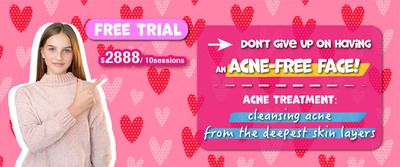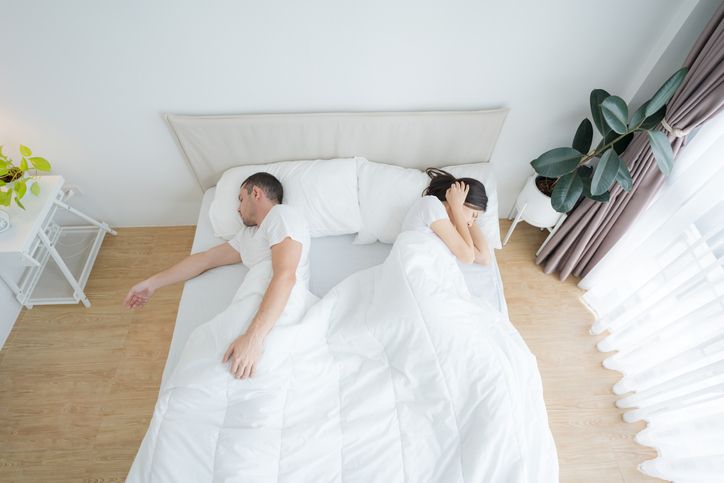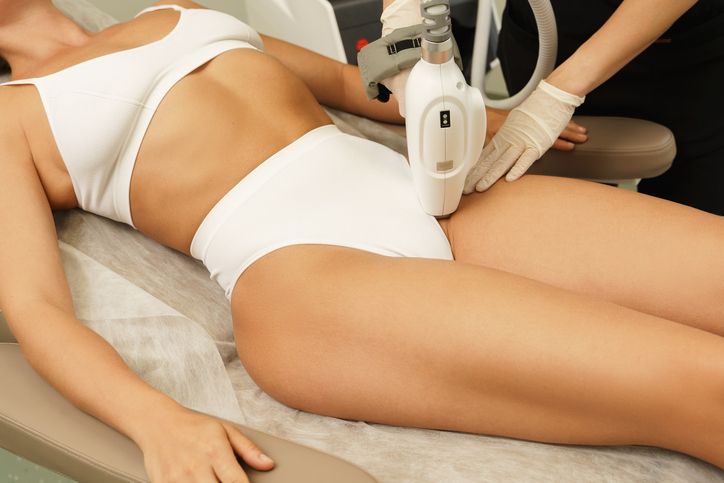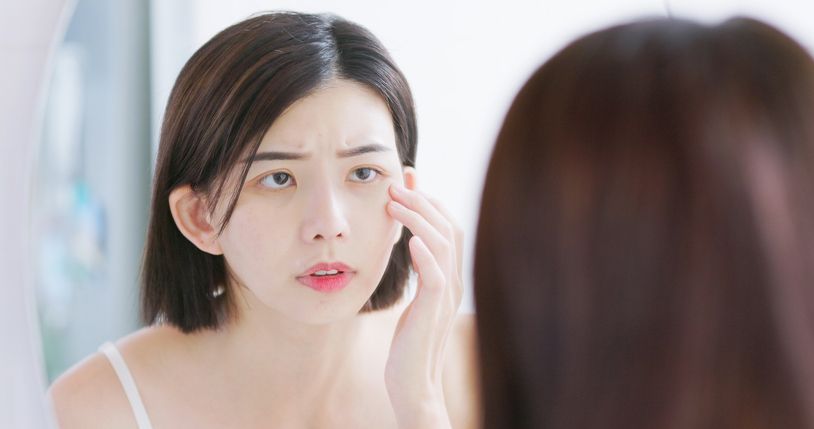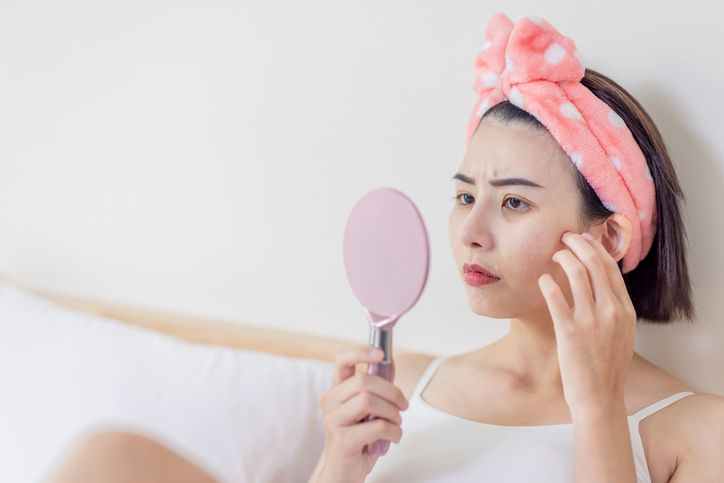- Home
- Trend
- Weight Loss Strategies
- Acne Tips
- Hair Health Information
- Blemish Removal Tips
- Acne Scar Removal Tips
- Muscle Building Techniques
- Intimate Care Tips
- Postpartum Intimate Care
- Eye Bags Wiki
- Tips for Face Slimming
- Secret of Permanent Hair Removal
- Breast Enlargement Tips
- Cure to Snoring
- Marionette Lines
- Skin-Tightening Secrets

免費體驗
Acne Treatment
1 Minute Self-Registration
Date should not be before minimal date
Acne, a widespread skin condition, can be particularly frustrating when it affects the chin. This comprehensive guide explores the nuances of chin acne, examining its causes and effective treatments. Delving into the intricate interplay of dead skin cells, the impact of salicylic acid and benzoyl peroxide, hormonal influences, and other crucial factors, this guide aims to equip you with the knowledge to manage and prevent chin acne effectively.
1
How Does Chin Acne Happen?

Chin acne manifests as pimples, blackheads, or whiteheads on the chin area. It is a prevalent form of acne, driven by factors such as excess oil production, dead skin cells, hormonal fluctuations, and bacterial infections. Also, dead skin cells play a pivotal role in chin acne development. Accumulating on the skin's surface, they combine with excess oil, leading to clogged pores. This environment becomes a breeding ground for acne-causing bacteria, contributing to pimple formation.
Acne on the chin is not necessarily associated with a specific gender; both males and females can experience acne in this area. However, there are certain factors that may contribute to the development of acne on the chin. The below will explain the causes behind these acne, and you can check out types of chin acne that you might encounter in the next section.
Hormones
Hormonal fluctuations, particularly an increase in androgens (male hormones that are present in both males and females), can stimulate the sebaceous glands to produce more oil. This excess oil can lead to the development of acne, and the chin is one of the areas commonly affected.
Menstrual cycle
In females, hormonal changes during the menstrual cycle can contribute to acne breakouts, including those on the chin. Some women may experience premenstrual acne flares.
Polycystic Ovary Syndrome (PCOS)
PCOS is a hormonal disorder that can lead to increased androgen levels, causing acne. Women with PCOS may be more prone to developing acne on the chin and jawline.
Poor skin care habits
Not cleansing the chin area properly, using harsh or pore-clogging products, or not removing makeup thoroughly can contribute to acne.
Diet and lifestyle
Certain dietary factors and lifestyle habits can influence acne development. High-glycemic foods, dairy products, and stress, for example, have been associated with acne in some individuals.
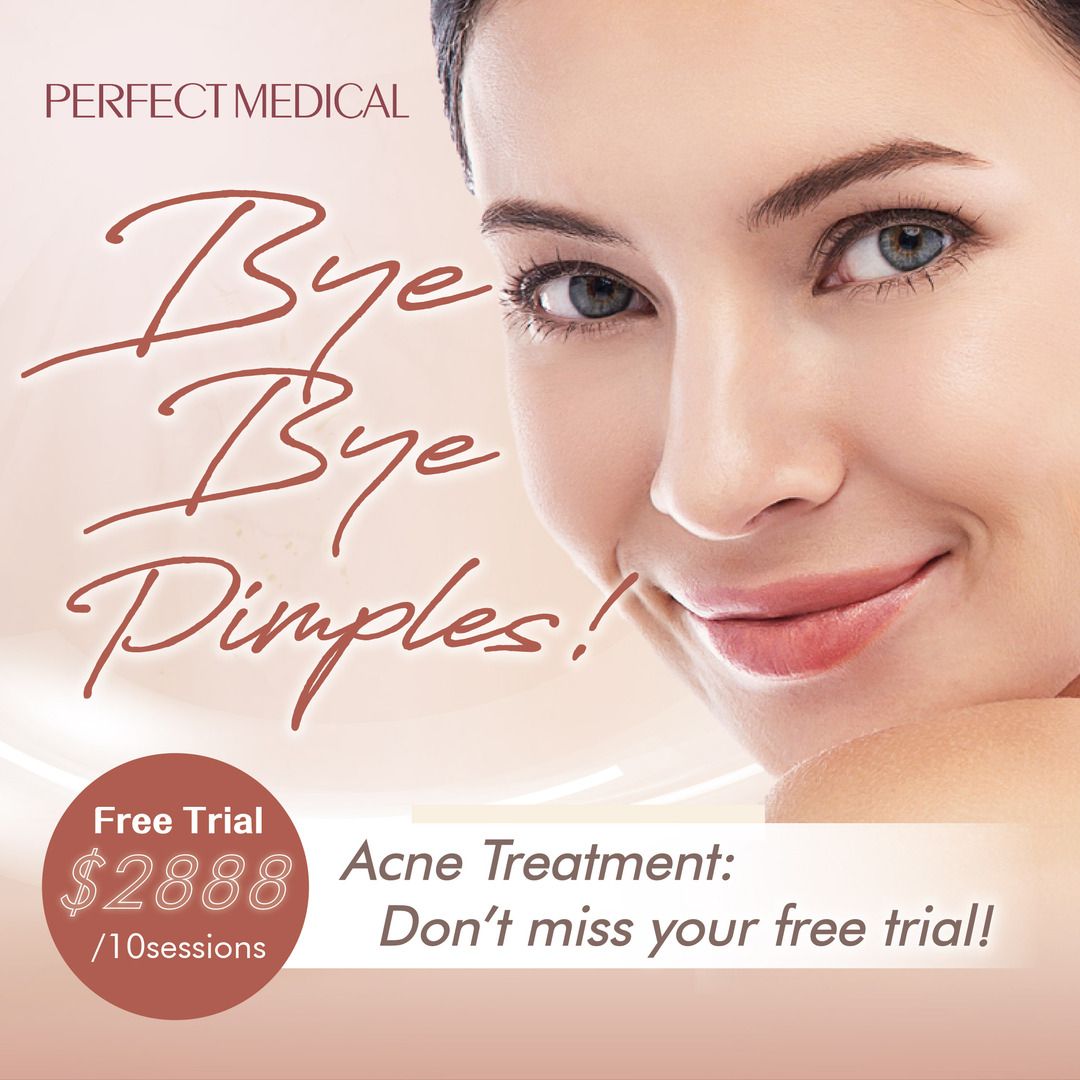
2
Types of Acne On Chin and its Influence
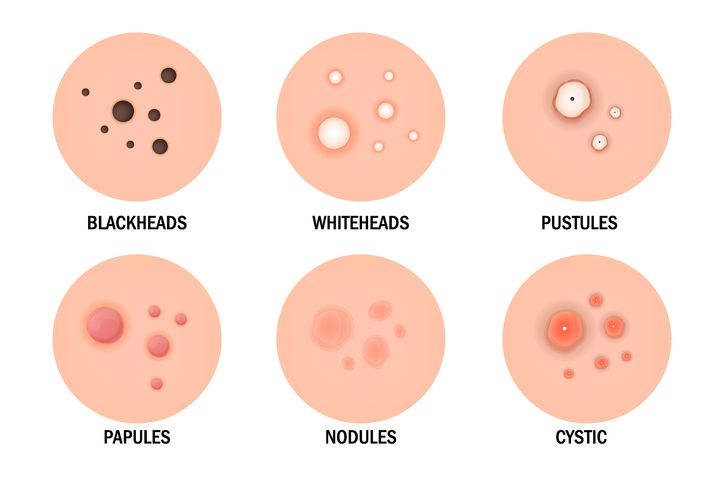
Hormonal Acne
Women often experience hormonal fluctuations during different menstrual phases, which can affect oil production and contribute to chin acne. Let's take a look on how menstrual cycle phases and chin acne intertwine:
1. Menstrual Phase (Days 1-5): Hormone levels are relatively low, but some women may still experience chin acne due to residual hormonal effects from the previous cycle.
2. Follicular Phase (Days 6-14): Rising oestrogen levels contribute to smoother skin, but increased androgen levels towards the end of this phase may stimulate oil production, potentially leading to chin acne.
3. Ovulation (Days 15-17): Hormones peak, and some women may notice increased oiliness on the chin, making it susceptible to acne.
4. Luteal Phase (Days 18-28): Progesterone rises, leading to more significant oil production. This phase is often associated with an increased likelihood of chin acne.
Whiteheads and Blackheads (Comedones)
Whiteheads and blackheads are types of non-inflammatory acne lesions. Whiteheads occur when a hair follicle becomes clogged with oil and skin cells, causing a closed bump. Blackheads, on the other hand, form when the clogged material is exposed to air, oxidising and creating a dark appearance. An example of a whitehead would be a small, raised, flesh-coloured bump, while a blackhead would look like a dark, open pore.
Papules & pustules
Papules are small, red bumps that develop when the walls surrounding the pores break down due to inflammation and infection of the hair follicles. These lesions are typically not filled with pus but can be tender to the touch. An example of a papule would be a red, raised bump on the chin. Whereas pustules are similar to papules but have a white or yellowish centre filled with pus. They are often more noticeable and may be surrounded by red, inflamed skin. An example of a pustule would be a raised, red bump with a visible white or yellow centre.
Nodules
Nodules are larger, solid, and painful lumps that form beneath the surface of the skin. They are deeper and more severe than pustules or papules and may cause significant inflammation. An example of a nodule would be a deep, painful lump on the chin.
Cysts
Cysts are deep, painful, pus-filled lesions that are larger than nodules. They can cause substantial inflammation and have the potential to lead to scarring. Cystic acne can be particularly challenging to treat. An example of a cyst would be a large, painful bump with a noticeable, fluid-filled centre.
Folliculitis
Folliculitis occurs when hair follicles become inflamed, leading to small red bumps or pustules. It can be caused by bacterial or fungal infections and may affect the chin area. An example of folliculitis would be small, red, inflamed bumps around hair follicles on the chin, resembling a rash.
- How to Fix Acne On Cheeks? 9 Things That You May Be Missing
- 6-Steps Guide to Get Rid of Blackheads the Right Way, Dermatologist Approved!
- 【Blackheads Nose】10 Tips to Gently Get Rid of Blackheads on Your Nose, Dermatologist-Approved!
- Avoid Foods That Can Cause Acne: The Ultimate Guide to Acne-Free Complexion
3
5 Ways to Treat Chin Acne with Confidence
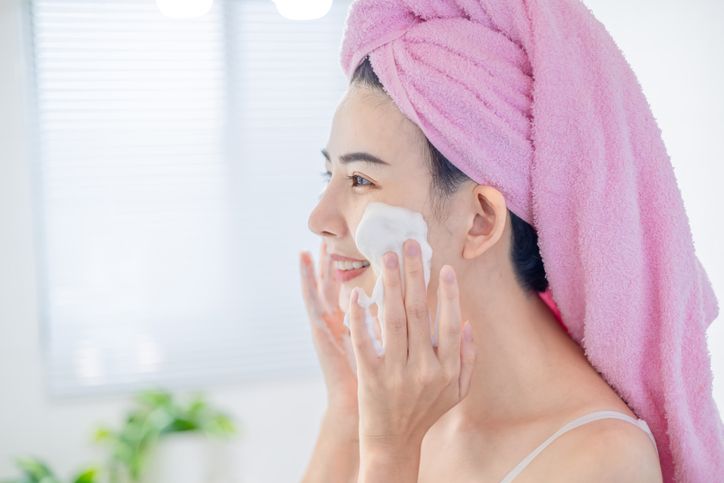
Medications like salicylic acid and benzoyl peroxide are known by many people, but there are actually more ways to tackle the issue effectively.
Use milk cleanser
Developing a comprehensive skincare routine is crucial for managing acne. This includes gentle cleansing to remove excess oil, dirt, and bacteria. Use a mild, non-comedogenic cleanser suitable for your skin type. Additionally, incorporate a moisturiser to maintain skin hydration, as over-drying can exacerbate acne.
Topical retinoids
Prescription-strength retinoids like tretinoin can be effective in preventing acne formation. They work by promoting cell turnover, preventing the clogging of hair follicles, and reducing inflammation. However, it's important to use retinoids under the guidance of a dermatologist due to potential side effects and sensitivity.
Antibiotics
Oral or topical antibiotics can be prescribed to control bacterial growth and inflammation associated with acne. They are often recommended for moderate to severe cases and are typically used for a limited duration to avoid antibiotic resistance.
Hormonal treatments
For individuals with hormonal acne, especially in women, hormonal treatments such as oral contraceptives or anti-androgen medications may be recommended. These can help regulate hormonal imbalances contributing to acne.
Managing excess oil production
Excessive oil production is a common contributor to chin acne. Using oil-free or non-comedogenic skincare products, incorporating oil-absorbing ingredients, and maintaining good hygiene practices can help manage oil production and prevent breakouts. For example, Perfect Medical's Acne Treatment that uses drainage technology and dual spiral suction to remove excess oil and dead skin cells can also help to control oil on skin and treat chin pimples.
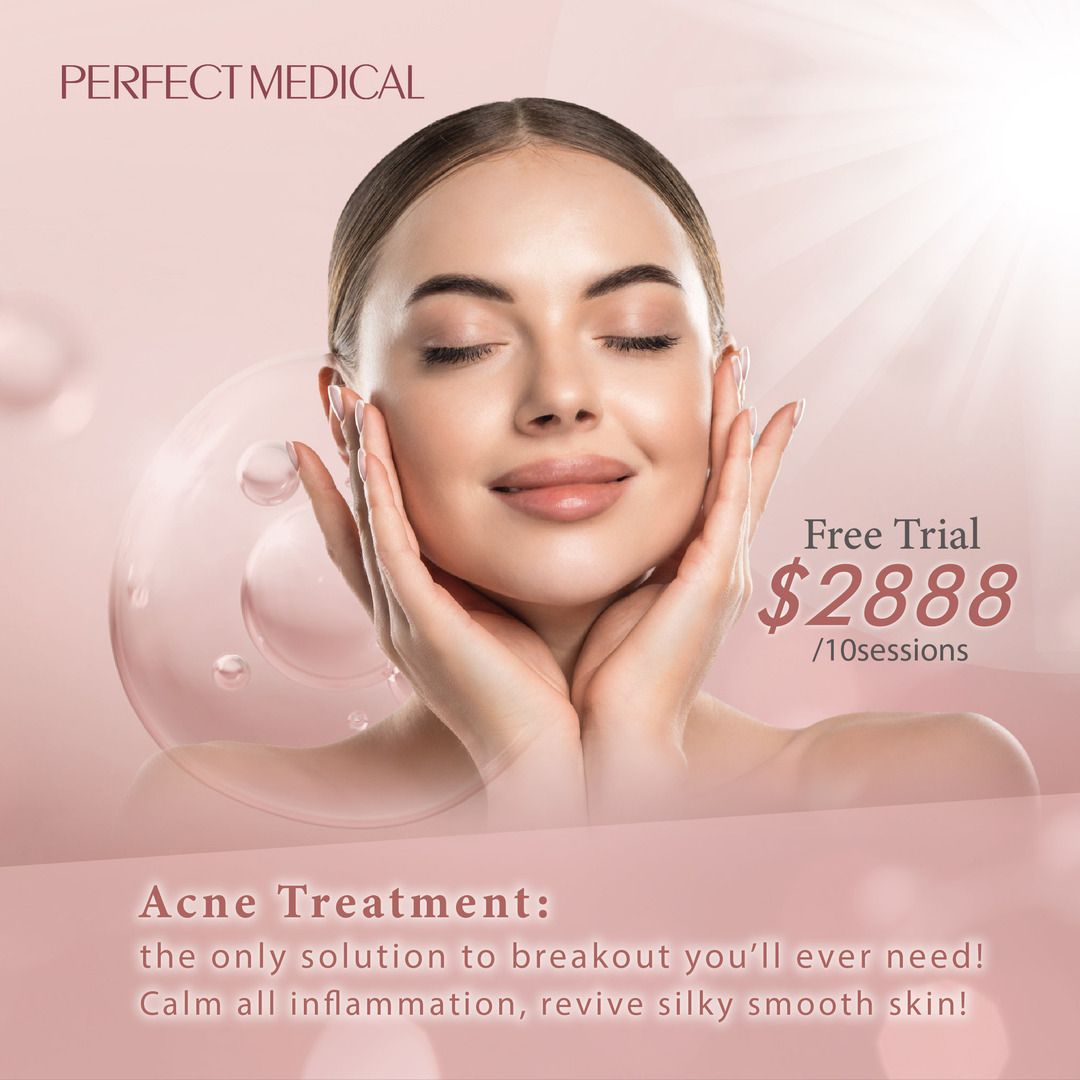
4
What If I Have Severe Acne?
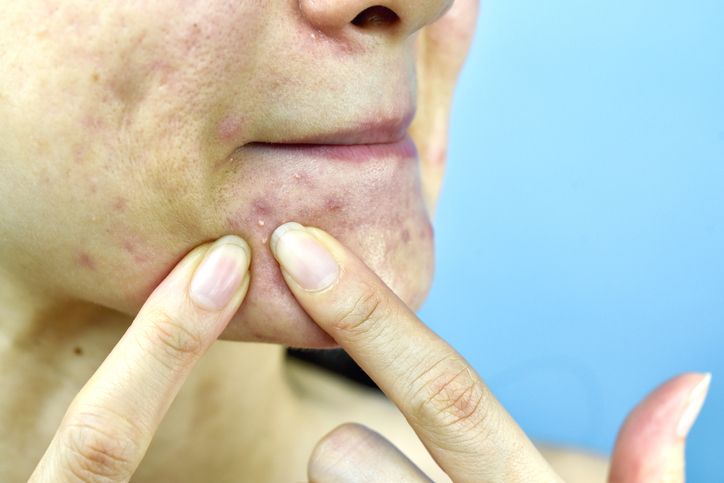
Effectively addressing chin acne necessitates a multifaceted approach. This includes maintaining a consistent skincare routine, using non-comedogenic products, and addressing underlying factors such as hormonal imbalances. Adopting a holistic strategy enhances the effectiveness of acne management.
Professional treatments
In-office procedures like laser therapy, microdermabrasion, or corticosteroid injections can be considered for severe or persistent acne.
Chemical peels
If you think your acne or acne scars have affected your image, chemical peels containing ingredients like glycolic acid or salicylic acid. These peels exfoliate the skin's surface, unclog pores, and promote skin renewal, reducing the appearance of acne.
Check with a dermatologist
Trust the professionals. While over-the-counter products can be beneficial, consulting with a dermatologist is advisable for personalised guidance. They can assess your skin type, the severity of acne, and recommend a tailored treatment plan for optimal results.
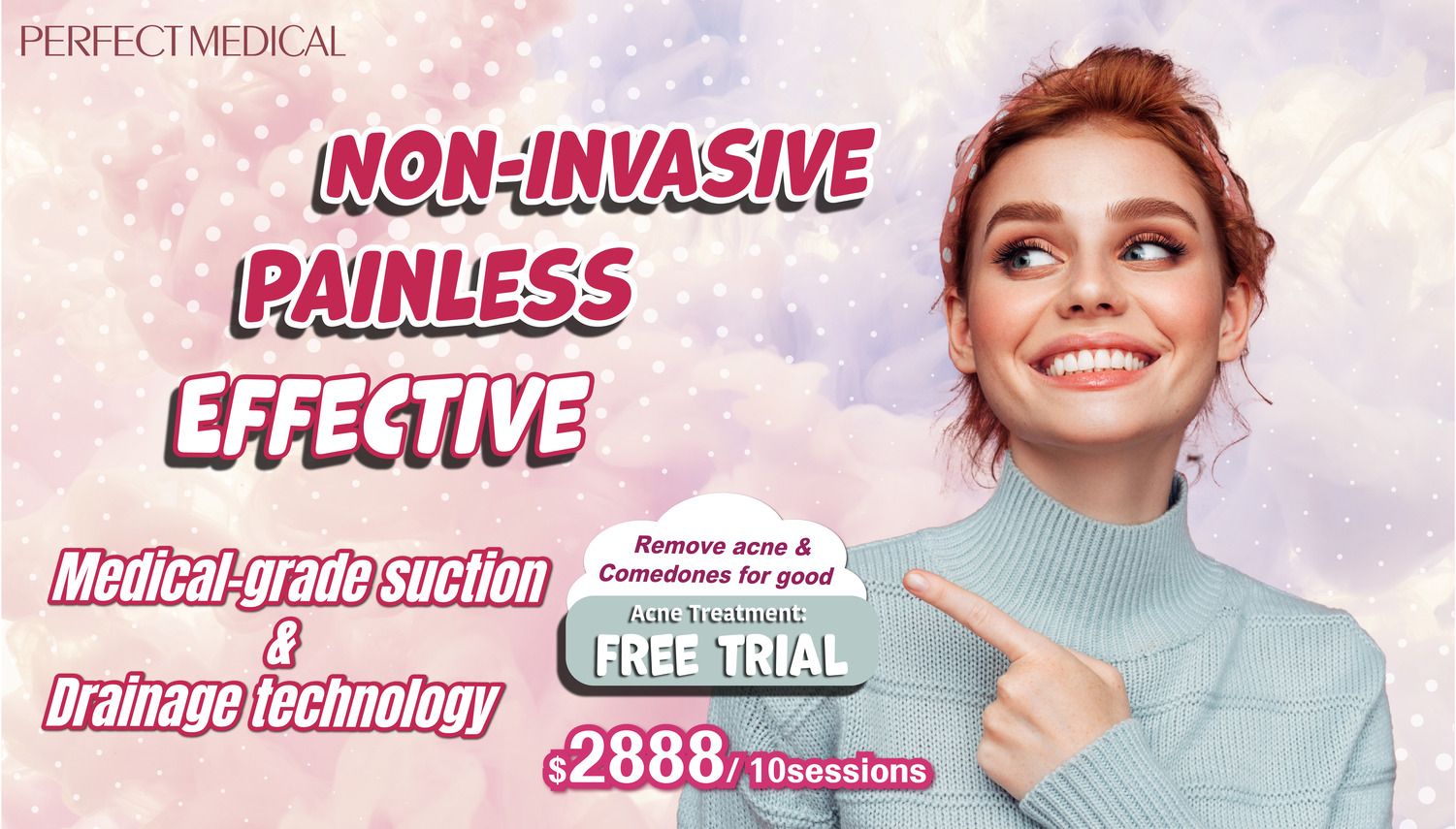
免費體驗
Acne Treatment
1 Minute Self-Registration
Date should not be before minimal date
5
Prevention is Key: Get Rid of Chin Acne By Changing What You Put on Face
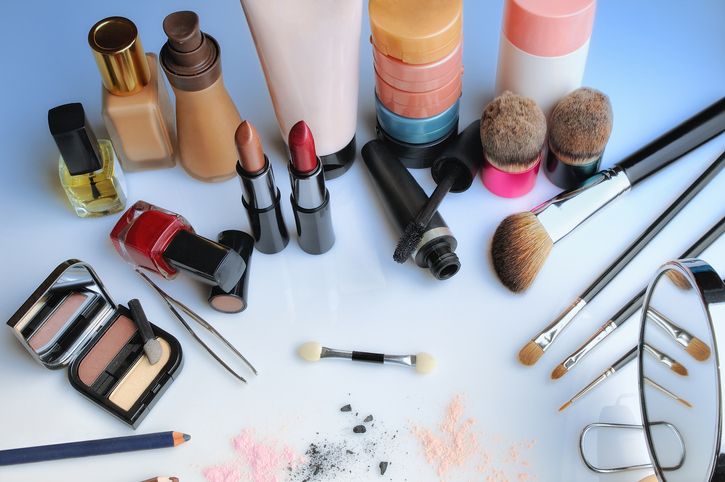
To help prevent acne on the chin, it's advisable to avoid makeup items that may contribute to pore-clogging and irritation. Here are some makeup items and ingredients to be cautious about:
Heavy Foundation
Thick or oil-based foundations can clog pores and contribute to the development of acne. Opt for lightweight, non-comedogenic foundations that allow your skin to breathe.
Oil-Based Products
Avoid makeup products, such as concealers or primers, that are oil-based. These can increase oiliness and potentially lead to clogged pores. Look for oil-free or water-based alternatives.
Comedogenic Ingredients
Be cautious of makeup containing comedogenic ingredients, which can block pores. Common culprits include certain oils, lanolin, and cocoa butter. Check product labels for terms like "non-comedogenic."
Fragranced Products
Fragrances in makeup can be irritating to the skin, leading to inflammation and acne. Opt for fragrance-free or hypoallergenic options, especially if you have sensitive skin.
Thick Powders
Heavy powders can settle into pores and exacerbate acne. Choose finely milled or mineral powders, and apply them sparingly to avoid caking.
Expired Makeup
Using expired makeup can expose your skin to bacteria and other contaminants. Check the expiration dates on your products and replace them regularly.
Harsh Makeup Removers
Aggressive makeup removers containing alcohol or other harsh chemicals can strip the skin of its natural oils, potentially leading to increased oil production and acne. Use gentle, oil-free makeup removers.
Dirty Makeup Brushes
Dirty brushes can harbor bacteria, contributing to breakouts. Clean your makeup brushes regularly to prevent bacterial contamination on your skin.
Waterproof Makeup
Waterproof makeup can be harder to remove, requiring more vigorous cleansing that may irritate the skin. Opt for non-waterproof alternatives when possible.
Long-Wearing Formulas
While long-wearing makeup can be convenient, some formulations may be more occlusive and contribute to acne. Balance the desire for long wear with considerations for your skin type, and choose.
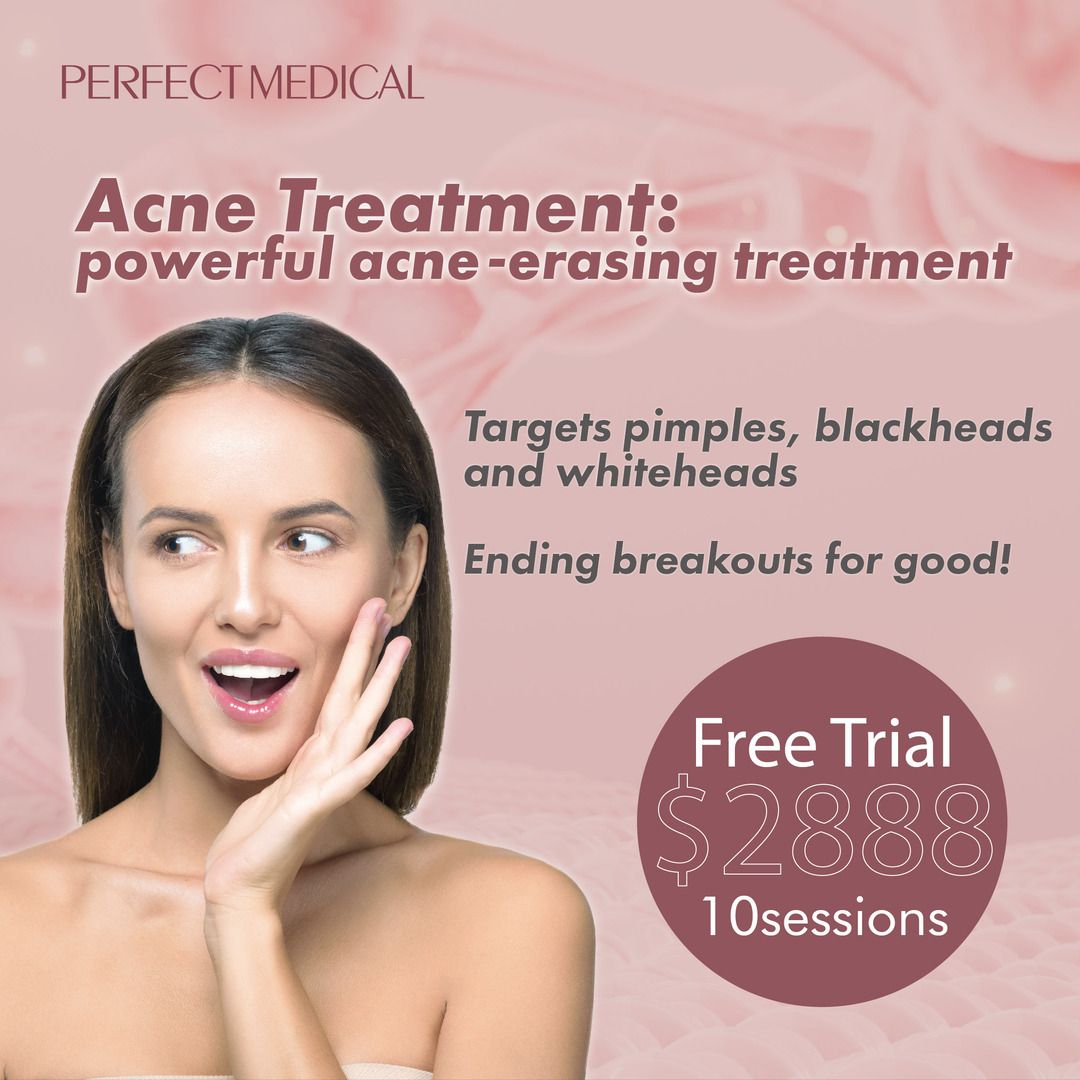
6
Treating Acne By Changing Your Lifestyle To Prevent Future Breakouts

Aside from changing to a healthier makeup habit, there are more you can do to reduce chin acne breakouts:
1. Healthy Diet
Consume a balanced diet rich in fruits, vegetables, whole grains, and lean proteins. Limit the intake of high-glycemic foods, sugary snacks, and dairy products, as they may influence acne development.
2. Hydration
Stay adequately hydrated by drinking plenty of water. Proper hydration supports overall skin health and helps flush out toxins from the body.
3. Adequate Sleep
Ensure you get enough quality sleep each night. Lack of sleep can contribute to stress and hormonal imbalances, potentially worsening acne.
4. Regular Exercise
Engage in regular physical activity to promote circulation and reduce stress. Exercise can also help regulate hormone levels, contributing to healthier skin.
5. Stress Management
Incorporate stress-reducing activities into your routine, such as meditation, yoga, deep breathing exercises, or hobbies that bring you joy. Chronic stress can exacerbate acne.
6. Hands Off Your Face
Avoid touching your face frequently, as it can transfer bacteria and irritants to the skin, potentially causing or worsening acne breakouts.
7. Clean Bedding and Towels
Regularly change and wash pillowcases, sheets, and towels to prevent the accumulation of bacteria and oils that can contribute to acne.
8. Avoid Smoking and Excessive Alcohol
Smoking and excessive alcohol consumption can negatively impact skin health and contribute to inflammation. Quitting smoking and moderating alcohol intake may improve overall skin condition.
9. Gentle Skincare Products
Choose skincare products that are gentle and non-comedogenic. Avoid harsh scrubs and abrasive cleansers, as they can irritate the skin and worsen acne.
10. Sun Protection
Besides using sunscreen, wear protective clothing and accessories like hats when exposed to the sun for extended periods. Sun protection is crucial to prevent skin damage and pigmentation issues.
Remember that individual responses to lifestyle modifications can vary, and it may take time to observe improvements in your skin. If you have persistent or severe acne concerns, consulting with a dermatologist can provide personalised advice and treatment options.
7
Conclusion

By addressing the root causes and adopting a comprehensive approach, you can overcome chin acne and achieve clear, radiant skin. Taking into account the menstrual cycle, cystic acne, hormonal influences, sensitivity, and sebum production, you can build effective chin acne management on your own!
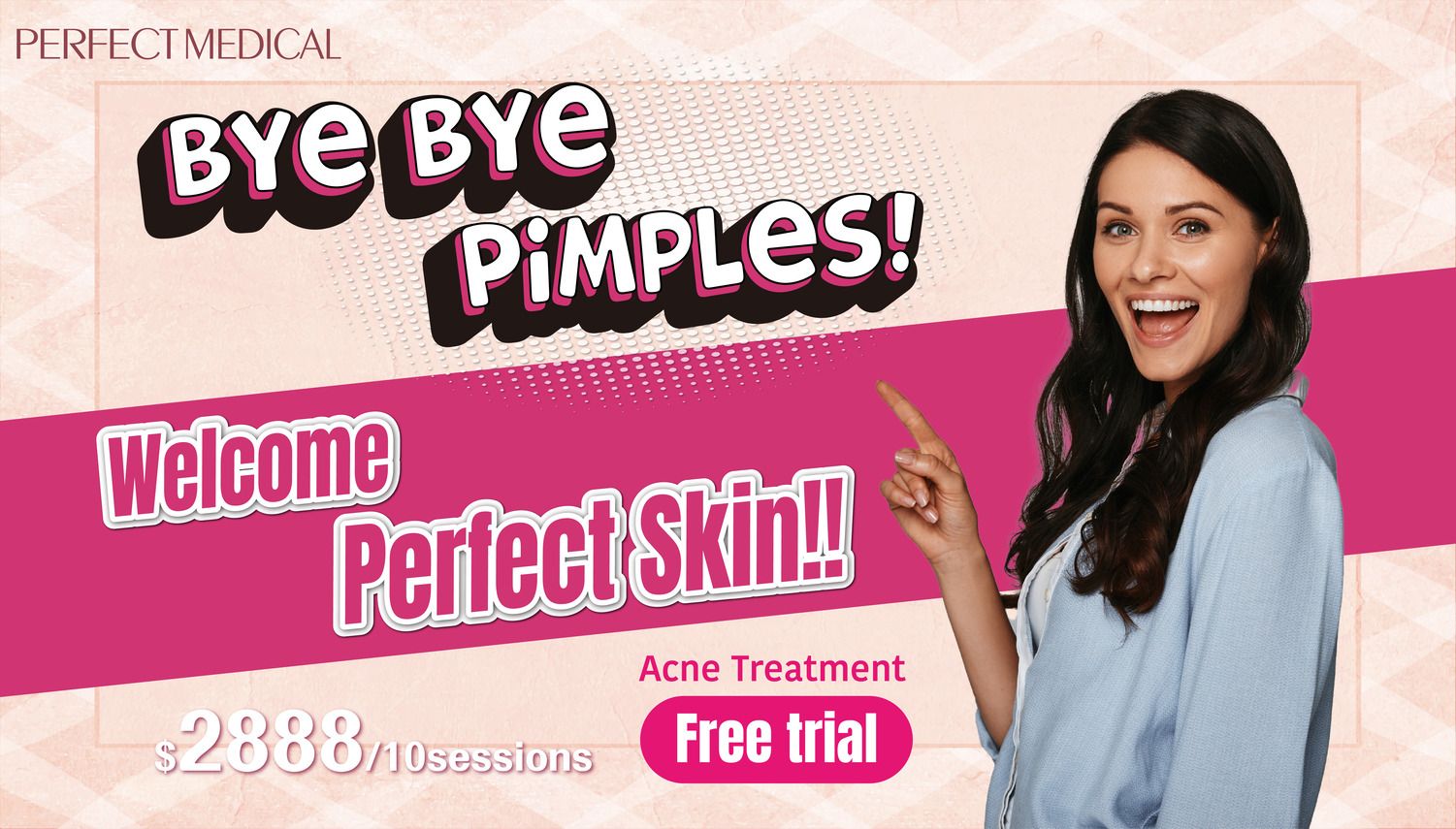
免費體驗
Acne Treatment
1 Minute Self-Registration
Date should not be before minimal date
FAQ

1. Can certain medications contribute to chin acne?
Yes, certain medications, including corticosteroids, hormonal medications, and some anticonvulsants, may contribute to acne breakouts, including chin acne. If you suspect that your medication is affecting your skin, consult with your healthcare provider to explore alternative options or skincare strategies.
2. Is it possible to over-exfoliate and worsen chin acne?
Yes, over-exfoliation can strip the skin of its natural oils, leading to increased oil production and potential irritation, which may worsen chin acne. It's essential to follow a gentle exfoliation routine and avoid using abrasive products excessively. Consult with a dermatologist for personalised exfoliation recommendations.
3. Can hormonal changes during the menstrual cycle specifically trigger chin acne?
Yes, hormonal changes during the menstrual cycle can contribute to the development of chin acne. The increase in androgens, particularly in the days leading up to menstruation, can stimulate the sebaceous glands, leading to excess oil production and the potential for acne breakouts on the chin and jawline.
4. Are there specific lifestyle habits that can exacerbate acne mechanica on the chin?
Yes, lifestyle habits such as frequently wearing tight clothing, chin straps, or helmets can contribute to acne mechanica on the chin. The friction, pressure, and heat generated by these items can trap sweat and oil, leading to blocked pores and acne. Choosing breathable fabrics and taking breaks from tight accessories can help prevent acne mechanica.
5. Can using heavy or pore-clogging makeup contribute to chin acne?
Yes, using heavy or pore-clogging makeup can contribute to the development of chin acne. Certain cosmetic products may contain ingredients that can clog pores and exacerbate acne. Opt for non-comedogenic and oil-free makeup products to minimise the risk of pore blockages, and ensure thorough makeup removal at the end of the day to prevent the accumulation of makeup residues that could contribute to acne development. If you're unsure about specific makeup products, consider consulting with a dermatologist for personalised recommendations.
